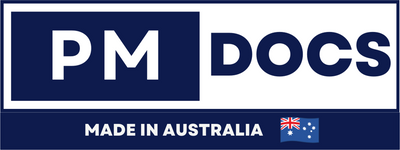NIST CSF 2.0 Implementation Guide For Australian Companies
Introduction
In today's digital age, cyber threats are more prevalent than ever. For Australian companies, managing these risks is crucial to safeguarding sensitive information and maintaining customer trust. The National Institute of Standards and Technology (NIST) Cybersecurity Framework (CSF) 2.0 provides a comprehensive approach to managing cyber risk. This guide will help you understand how to implement the NIST CSF 2.0 in your organization.

Understanding NIST CSF 2.0
The NIST CSF 2.0 is an updated version of the original framework designed to help organizations manage and reduce cybersecurity risk. It's a flexible, voluntary framework that consists of standards, guidelines, and best practices. The framework is structured around five core functions: Identify, Protect, Detect, Respond, and Recover.
Core Functions Of NIST CSF 2.0
-
Identify: Understanding your organization's cybersecurity risks, assets, and data is the first step. This function helps you grasp your environment and manage risks effectively.
-
Protect: Develop and implement safeguards to ensure critical infrastructure services are protected. This includes access controls, data security measures, and training.
-
Detect: Implement monitoring tools and processes to identify cybersecurity events promptly.
-
Respond: Create and maintain plans for responding to detected cybersecurity incidents to mitigate their impact.
-
Recover: Establish strategies to restore capabilities or services impaired by cybersecurity incidents.
Why NIST CSF 2.0 For Australian Companies?
1. Alignment with National Standards
NIST CSF 2.0 aligns well with Australia's cybersecurity framework, making it easier for companies to comply with national standards. It complements the Australian Cyber Security Centre (ACSC) guidelines, providing a robust framework that supports local compliance requirements.
2. Flexible and Scalable
Whether you're a small business or a large corporation, NIST CSF 2.0 can be tailored to meet your needs. Its flexibility allows companies to implement the framework in stages, adapting it to their specific cybersecurity landscape.
3. Enhancing Cyber Risk Management
By focusing on risk management, the NIST CSF 2.0 helps Australian companies prioritize their cybersecurity efforts. This risk-based approach ensures resources are allocated where they are most needed, enhancing overall security posture.
Steps To Implement NIST CSF 2.0
Step 1: Establish a Baseline
Begin by assessing your current cybersecurity posture. Identify existing processes, tools, and policies. This baseline will serve as a starting point for implementing the NIST CSF 2.0.
Step 2: Define Your Target Profile
Determine what your organization's cybersecurity goals are and what level of risk is acceptable. This target profile will guide your implementation process and help you measure progress.
Step 3: Conduct a Gap Analysis
Compare your baseline with the target profile to identify gaps in your cybersecurity strategy. This analysis will help you focus on areas that need improvement.
Step 4: Develop and Implement an Action Plan
Create a detailed action plan to address the gaps identified. This plan should include timelines, responsibilities, and resources needed for implementation. Ensure that the plan is realistic and achievable.
Step 5: Monitor and Review
Once the framework is implemented, continuously monitor your cybersecurity posture and review your action plan. Regular assessments will help you adapt to new threats and improve your security measures over time.
Challenges In Implementing NIST CSF 2.0
1. Resource Constraints
Implementing the NIST CSF 2.0 can be resource-intensive, especially for small businesses. It's crucial to allocate adequate resources and budget for cybersecurity initiatives.
2. Keeping Up with Evolving Threats
Cyber threats are constantly evolving, and staying up-to-date with the latest security measures can be challenging. Regular training and updates are essential to maintain a strong cybersecurity posture.
3. Achieving Organizational Buy-In
Securing buy-in from all levels of the organization is critical for successful implementation. This requires effective communication about the importance of cybersecurity and the benefits of the NIST CSF 2.0.
Conclusion
Implementing the NIST CSF 2.0 is a strategic move for Australian companies looking to enhance their cybersecurity posture. By understanding and applying its principles, organizations can better manage cyber risks and protect their assets. With a flexible, scalable approach, NIST CSF 2.0 aligns with national standards, making it an ideal choice for businesses of all sizes. By taking a proactive stance on cybersecurity, companies not only protect their sensitive information but also build trust with their customers and stakeholders. Start your journey towards stronger cybersecurity today by adopting the NIST CSF 2.0 framework.




